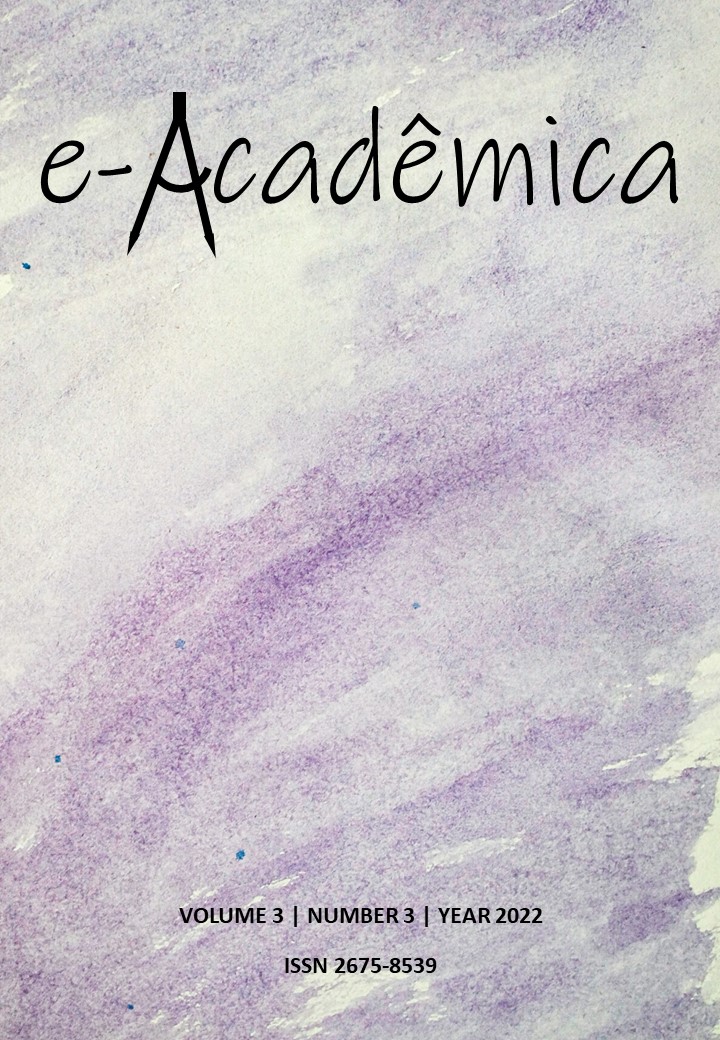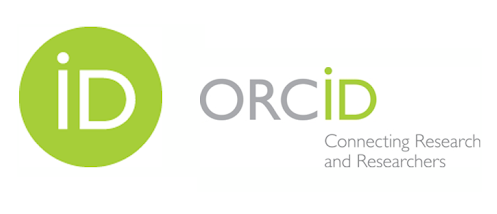The importance of awareness about the use of botulinum toxin in both therapeutic action and orofacial harmonization for dental surgeons
DOI:
https://doi.org/10.52076/eacad-v3i3.344Keywords:
Botulinum Toxin; Temporomandibular Dysfunction; Orofacial Harmonization; Awareness; Teaching.Abstract
One of the main factors that lead people to seek botulinum toxin (BT) is aesthetics, but it is known that it is also used to treat patients with temporomandibular dysfunction and bruxism, however, the harm and risks that this toxin in excess can do to the human body are still little addressed. Our goal is to promote awareness about the multiple applications of BT in the facial region and its health hazards and risks. Thus, to compose this review of narrative literature, searches were conducted between April and September for scientific material related to the importance of awareness about the use of BT in dentistry, through databases such as Pubmed and Google Scholar, with the indexers of the Virtual Health Library and LILACS, as well as leaflets of the toxin manufacturers. For the inclusion factors, we selected articles with the full text available that were related to the proposed theme, written in Portuguese or English, in consultation with the methodological bases, specifically in areas of human health of both sexes, with no classification between ages. We preferred studies published in the last 5 years, since there is a vast current literature on the subject that allows us to use more current sources, and to better understand the current effects of the use of BT. We consider type A BT an effective and safe therapeutic resource, and its use is coherent in the therapeutic approach of different diseases and aesthetic applications based on clinical evidence. However, it is necessary that dental surgeons have a deep knowledge about the application techniques and possible adverse reactions that may occur after the application, in order to act correctly in their interventions or even avoid them.
References
Althawadi, N., Ujam, A., & Visavadia, B. (2022). Botox hidden dangers. British dental journal, 232(4), 192–193.
Aoki K. R. (2003). Pharmacology and immunology of botulinum toxin type A. Clinics in dermatology, 21(6), 476–480.
Austin, E., Koo, E., & Jagdeo, J. (2018). The Cellular Response of Keloids and Hypertrophic Scars to Botulinum Toxin A: A Comprehensive Literature Review. Dermatologic surgery : official publication for American Society for Dermatologic Surgery [et al.], 44(2), 149–157.
Barbero, P., Busso, M., Artusi, C. A., De Mercanti, S., Tinivella, M., Veltri, A., Durelli, L., & Clerico, M. (2016). Ultrasound-guided Botulinum Toxin-A Injections: A Method of Treating Sialorrhea. Journal of visualized experiments : JoVE, (117), 54606.
Bellows, S., & Jankovic, J. (2019). Immunogenicity associated with botulinum toxin treatment. Toxins, 11(9), 491.
Contox. https://www.contox.com.br/5-marcas-de-toxina-botulinica-vendidas-no-brasil/
Lab. Allergan-brazil. (2022). Bula Botox. https://allergan-web-cdn-prod.azureedge.net/allerganbrazil/allerganbrazil/media/allergan-brazil/botox_bula_profissional.pdf
Lab. Bergamo. (2022). Bula Botulift. https://bula.gratis/laboratorio_quimico_farmaceutico_bergamo_ltda/1/botulift/profissional
Lab. Blau Farmacêutica (2022). Bula Botulim. https://www.blau.com.br/storage/app/media/Bulas%20Novas%202019/Botulim_Bula_Paciente_2019_2.pdf
Lab. Ispen Biopharm. Bula Dysport. https://www.bulas.med.br/p/bulas-de-medicamentos/bula/7392/dysport.htm
Lab. Daewoong Pharmaceuticals. Bula Nabota. https://bula.gratis/moksha_8_brasil_distribuidora_e_representacao_de_medicamentos_ltda/1/nabota/profissional
Lab. Cristalia. Bula Prosigne. https://www.cristalia.com.br/arquivos_medicamentos/148/Prosigne_Bula_Profissional.pdf
Lab. Merz Aesthetics. Bula Xeomin. https://bula.gratis/merz_farmaceutica_comercial_ltda/1/xeomin/profissional
Camargo, C. P., Xia, J., Costa, C. S., Gemperli, R., Tatini, M. D., Bulsara, M. K., & Riera, R. (2021). Botulinum toxin type A for facial wrinkles. The Cochrane database of systematic reviews, 7(7), CD011301.
Carvalho R, Shimaoka A, Andrade A. (2017). O uso da Toxina Botulínica na Odontologia. Revista Ciências e Odontologia, volume (1), páginas 5-9.
Chagas, T. F., Almeida, N. V., Lisboa, C. O., Ferreira, D., Mattos, C. T., & Mucha, J. N. (2018). Duration of effectiveness of Botulinum toxin type A in excessive gingival display: a systematic review and meta-analysis. Brazilian oral research, 32, e30.
de Matos, M. B., Valle, L. S. E. M. B., Mota, A. R., & Naves, R. C. (2017). O uso da toxina botulínica na correção do sorriso gengival-revisão de literatura. Braz J Periodontol-September, 27(03), 29-36.
Dorizas, A., Krueger, N., & Sadick, N. S. (2014). Aesthetic uses of the botulinum toxin. Dermatologic clinics, 32(1), 23–36.
Dressler D. (2008). Botulinum toxin drugs: future developments. Journal of neural transmission (Vienna, Austria: 1996), 115(4), 575–577.
Emara, A. S., Faramawey, M. I., Hassaan, M. A., & Hakam, M. M. (2013). Botulinum toxin injection for management of temporomandibular joint clicking. International journal of oral and maxillofacial surgery, 42(6), 759–764.
Fonseca, E., Alves, J., & Hasse, R. (2018). O uso da radiofrequência no tratamento de rejuvenescimento facial. Revista Estética em Movimento, 1.
Gouveia, B. N., Ferreira, L. de L. P., & Rocha Sobrinho, H. M. (2020). O uso da toxina botulínica em procedimentos estéticos. REVISTA BRASILEIRA MILITAR DE CIÊNCIAS, 6(16).
Kassir, M., Gupta, M., Galadari, H., Kroumpouzos, G., Katsambas, A., Lotti, T., Vojvodic, A., Grabbe, S., Juchems, E., & Goldust, M. (2020). Complications of botulinum toxin and fillers: A narrative review. Journal of cosmetic dermatology, 19(3), 570–573.
Kenney, C., & Jankovic, J. (2008). Botulinum toxin in the treatment of blepharospasm and hemifacial spasm. Journal of neural transmission (Vienna, Austria : 1996), 115(4), 585–591.
Khenioui, H., Houvenagel, E., Catanzariti, J. F., Guyot, M. A., Agnani, O., & Donze, C. (2016). Usefulness of intra-articular botulinum toxin injections. A systematic review. Joint bone spine, 83(2), 149–154.
la Fleur, P., & Adams, A. (2020). Botulinum Toxin for Temporomandibular Disorders: A Review of Clinical Effectiveness, Cost-Effectiveness, and Guidelines. Canadian Agency for Drugs and Technologies in Health.
Malgorzata, P., Piotr, C., & Edward, K. (2017). The Mechanism of the Beneficial Effect of Botulinum Toxin Type a Used in the Treatment of Temporomandibular Joints Dysfunction. Mini reviews in medicinal chemistry, 17(5), 445–450.
Mimeh, H., Fenech Magrin, A. M., Myers, S., & Ghanem, A. M. (2019). A Critical Review of Botulinum Toxin Type A in the Prophylactic Treatment of Chronic Migraine in Adults. Aesthetic surgery journal, 39(8), 898–907.
Nasr, M. W., Jabbour, S. F., Sidaoui, J. A., Haber, R. N., & Kechichian, E. G. (2016). Botulinum Toxin for the Treatment of Excessive Gingival Display: A Systematic Review. Aesthetic surgery journal, 36(1), 82–88.
Nepal, M. R., & Jeong, T. C. (2020). Alternative Methods for Testing Botulinum Toxin: Current Status and Future Perspectives. Biomolecules & therapeutics, 28(4), 302–310.
Oliveira, M. T. D., Molina, G. O., & Molina, R. O. (2011). Sorriso gengival, quando a toxina botulínica pode ser utilizada. Rev. Odontol. Araçatuba (Impr.), 58-61.
Park, J., & Park, H. J. (2017). Botulinum Toxin for the Treatment of Neuropathic Pain. Toxins, 9(9), 260
Polo M. (2005). Botulinum toxin type A in the treatment of excessive gingival display. American journal of orthodontics and dentofacial orthopedics : official publication of the American Association of Orthodontists, its constituent societies, and the American Board of Orthodontics, 127(2), 214–261.
Reis, A. L. M., Braga, G. P., Segantini, L. H. C., Braga, R. P., de Castro Oliveira, U., de Lima, R. F., ... & da Silva, D. B. (2020, October). A Toxina Botulínica no tratamento de DTM muscular. In Congresso Interdisciplinar-ISSN: 2595-7732 (Vol. 5, No. 1, pp. 1-5).
Sethi, N., Singh, S., DeBoulle, K., & Rahman, E. (2021). A Review of Complications Due to the Use of Botulinum Toxin A for Cosmetic Indications. Aesthetic plastic surgery, 45(3), 1210–1220.
Silberstein S. D. (2001). Review of botulinum toxin type A and its clinical applications in migraine headache. Expert opinion on pharmacotherapy, 2(10), 1649–1654.
Sundaram, H., Signorini, M., Liew, S., Trindade de Almeida, A. R., Wu, Y., Vieira Braz, A., Fagien, S., Goodman, G. J., Monheit, G., Raspaldo, H., & Global Aesthetics Consensus Group (2016). Global Aesthetics Consensus: Botulinum Toxin Type A--Evidence-Based Review, Emerging Concepts, and Consensus Recommendations for Aesthetic Use, Including Updates on Complications. Plastic and reconstructive surgery, 137(3), 518e–529e.
Wabbels, B., Jost, W. H., & Roggenkämper, P. (2011). Difficulties with differentiating botulinum toxin treatment effects in essential blepharospasm. Journal of neural transmission (Vienna, Austria : 1996), 118(6), 925–943.
Witmanowski, H., & Błochowiak, K. (2020). The whole truth about botulinum toxin - a review. Postepy dermatologii i alergologii, 37(6), 853–861.
Wheeler A. H. (1997). Therapeutic uses of botulinum toxin. American family physician, 55(2), 541–548.
Zengiski, A., Basso, I. B., Cavalcante-Leão, B. L., Stechman-Neto, J., Santos, R. S., Guariza-Filho, O., Zeigelboim, B. S., Taveira, K., & de Araujo, C. M. (2022). Effect and longevity of botulinum toxin in the treatment of gummy smile: a meta-analysis and meta-regression. Clinical oral investigations, 26(1), 109–117.
Downloads
Published
How to Cite
Issue
Section
License
Copyright (c) 2022 Mariana Leticia Solidade Ramos; Lilian de Araujo Curvelo Teixeira; Bruna Thais Siqueira Silva Bastos; Matheus Gabriel Oestmann Gebara ; Manoel Barbosa da Silva; Denis Honorato Costa

This work is licensed under a Creative Commons Attribution 4.0 International License.
Autores que publicam nesta revista concordam com os seguintes termos:
1) Autores mantém os direitos autorais e concedem à revista o direito de primeira publicação, com o trabalho simultaneamente licenciado sob a Licença Creative Commons Attribution que permite o compartilhamento do trabalho com reconhecimento da autoria e publicação inicial nesta revista.
2) Autores têm autorização para assumir contratos adicionais separadamente, para distribuição não-exclusiva da versão do trabalho publicada nesta revista (ex.: publicar em repositório institucional ou como capítulo de livro), com reconhecimento de autoria e publicação inicial nesta revista.
3) Autores têm permissão e são estimulados a publicar e distribuir seu trabalho online (ex.: em repositórios institucionais ou na sua página pessoal) a qualquer ponto antes ou durante o processo editorial, já que isso pode gerar alterações produtivas, bem como aumentar o impacto e a citação do trabalho publicado.










